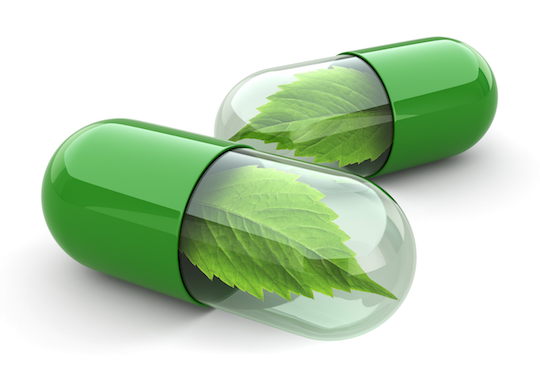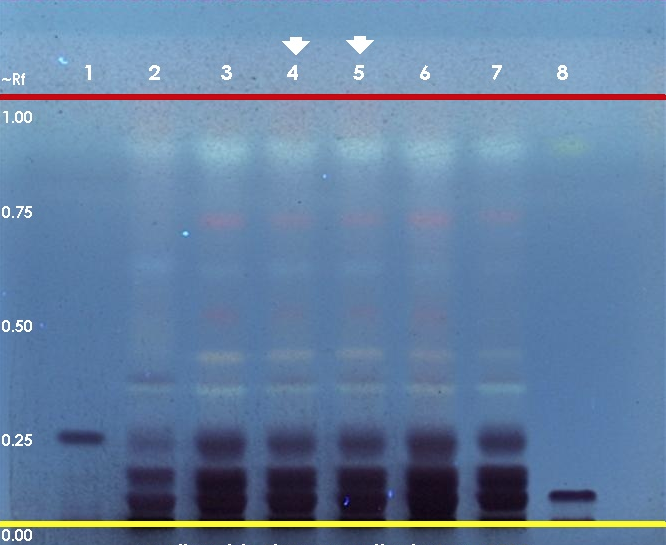
I have a nerdy fascination with the subject of zoopharmacognosy—the study how we humans gained knowledge of which plants are food, which are poison, and which are medicine, by observing the animals around us.

Other creatures seem to know what to eat, and what to avoid. Some have figured out ways to self-medicate by chewing or even swallowing certain plants.
We may not want to admit it, but we learned a lot from animals. If they were munching on the leaves of a bush, and looked happy and didn’t die, our ancient ancestors would likely try it too. Conversely, if an animal munched on a plant, and suddenly looked unwell and quickly died, our ancestors knew to avoid that one…or perhaps put some of its sap on their spears to improve hunting efficiency.
Beyond zoopharmacognosy, some of our most important botanical discoveries came about by accident.

Take the Camellia sinensis plant, AKA tea. Its leaves were used medicinally long before they became the popular beverage we know today. The story goes that 4,759 years ago, Chinese Emperor Shennong accidentally drank some water that had a tea leaf in it. He got a little high, which he enjoyed, and soon tea-drinking became a thing.
My suspicion is that the emperor likely observed ‘the help’ enjoying hot water poured over discarded medicinal tea leaves, and he simply rebranded it as a regal luxury.
Advanced “Tea-Making”
Regardless of who first made tea, it was a simple method adapted from watching how other primates used leaves. Instead of chewing them as they did, we added hot water to tea leaves and drank the mixture. We now know that the greenish or brownish liquid (depending on the type of tea) contains a multitude of interesting phytochemicals.
And I mean a multitude: xanthine alkaloids, glycosides, phenolics, flavonoids…I can go on and on. Most people believe caffeine–a mild stimulant found in tea, coffee, cocoa, and kola nut—is the most important xanthine alkaloid in Camellia sinensis. That’s because it is the one many of us lean on in the morning, afternoon, and sometimes late into the night while writing articles like this one.
Over the millennia, we humans have advanced our “tea making” skills. We figured out how to use water, alcohol, gycerine, oils, and other chemicals to decoct, distill, and extract a plethora of bioactive compounds from an astonishing variety of plants. We discovered how to purify and concentrate those compounds into drugs, flavorings, and supplemental nutrients. Eventually, we learned how to synthesize analogs of naturally occurring plant compounds, which is the basis of the modern pharmaceutical industry.

We now know how to isolate and purify what we believe to be the “active ingredients” in various plants. We call them standardized extracts and they provide higher levels of the desired phytochemicals than we could obtain from raw or minimally processed plant material. Presumably, that means stronger physiological effects.
But plants are complex. How do we know which phytochemicals are the ones to which we should standardize our herbal products?
Choices about biomarkers might be based in solid research, or they may be influenced by the marketing department looking for ways to differentiate their raw materials from their competitors’. Or both. It’s not always so simple.
Some raw materials suppliers in the supplement industry have made massive investments in identifying and isolating bioactive plant compounds, and in clinical studies to prove that these compounds have meaningful health benefits. These companies are doing a great job innovating new ways to deliver active substances from herbs. Much of the clinical research on herbs centers on the use of extracts standardized to specific marker compounds.
This research sometimes yields surprises. For example, let’s look at Amla, or Indian Gooseberry (Phyllanthus emblica). It’s a mainstay herb in Ayurveda. For many years, there was a consensus that vitamin C was the most important bioactive compound produced by this plant. But work by the scientists at Sabinsa—one of the world’s most respected herbal ingredient suppliers–revealed that the key biological markers for Amla are β-Glucogallin and Mucic acid 1, 4–lactone 5-O-Gallate (Majeed M, et al. J Agricultural Food Chem, 2009). This was later confirmed by other scientists.
Marker Selection
The term marker compound simply means a chemical constituent in an herb that can be used to verify its identity and potency.
In some cases, selection of biomarkers is based in simple
observation of effects; somebody notices that the effect of ingesting one herb
is similar to that of a different one. In other words, way back when, someone
said: “Hey, this coffee stuff makes me feel like that tea stuff does.” Chemical
analysis revealed that, lo and behold, these very different plants both produce
the compound we call caffeine.
Today, we know what chemical families are responsible for what physiological effects,
and we can pick and choose.
Many companies, especially those offering branded ingredients, standardize their extracts to contain only the constituents they identify as being the “most active” or providing specific effects. The choice is often based on preclinical studies showing activity in animals, and pharmaceutical-level studies confirming activity in humans.

Supplement companies utilizing these branded ingredients in their formulas produce some of the highest quality products on the market.
But sometimes, marker compounds are canonized as such based solely on their prominence in a given plant. Run a sample of an herb through a High-Performance Thin Layer Chromatography (HPTLC) machine and look for xanthines. If one of these compounds shows up in greater concentration, you might have found yourself a useful marker compound.
But just because a plant produces a substance in large quantities does not mean that substance has meaningful impact on human physiology.
Choices about biomarkers might be based in solid research, or they may be influenced by the marketing department looking for ways to differentiate their raw materials from their competitors’. Or both. It’s not always so simple.
Forest vs Trees
Production of herbal products today is far more sophisticated than it was hundreds of years ago. But there’s a real danger that in this trend toward isolation and standardization of specific phytochemicals, we lose the proverbial forest for the trees.
Going back to our example of tea, it may be true that caffeine is the best known and most popular phytochemical produced by this plant. But caffeine alone does not a green tea make!

When an herbal company submits a sample of green tea, coffee, cocoa, or kola nut (all plants that contain caffeine) to my lab (Alkemist Labs) and we perform HPTLC to confirm the botanical identity, we have to look beyond caffeine.

If we’re analyzing something that’s supposed to be Camellia sinensis and we only see one chromatographic band at the same retention time as the marker compound of caffeine, we will fail the sample. It’s not green tea. It’s caffeine–possibly derived from green tea, but not necessarily so. True green tea produces a spectrum of phytochemicals very different from other caffeine-containing herbs.
Measurement of specific biomarkers is extremely useful, but in the rush to identify and market standardized extracts we run the risk of reducing the subtle complexity of botanical medicine down to a catalog of single constituents. We ignore the distinct biochemical profiles that give herbs their diverse effects.
Consider coffee versus yerba mate. Both plants contain significant amounts of caffeine. But if I drink coffee right before bed, I have no trouble falling and staying asleep. If I drink yerba mate any time after 3pm I’ll likely be up until that first bird starts to sing outside my window. Clearly, it’s not the caffeine content alone that determines the effects of these herbs on me, it is the specific ratios of xanthines found in yerba mate that make it so different from coffee.

Whole Herb Synergy
Some botanical companies, as well as practitioners and patients who use herbal products, resist the production model based exclusively on single-constituent standardized-extracts. They’re concerned about the increasing “pharmaceuticalization” of herbal medicine, and they believe the benefits of herbal remedies depends upon the synergy of all the compounds produced by the plants.
Consider coffee versus yerba mate. Both contain significant amounts of caffeine. But if I drink coffee right before bed, I have no trouble falling asleep. If I drink yerba mate any time after 3pm I’ll likely be up until that first bird starts to sing. Clearly, it’s not the caffeine content alone that determines the effects of these herbs on me.
This “whole herb” philosophy reflects a more traditional herbalist view, and there’s merit to it. Some manufacturers hold that extracting the active constituents of an herb is problematic because we lose the mineral content of the plant. So, they add that back.

For example, Herbalist & Alchemist—a company founded by herbalist David Winston–uses a process where after an herb is macerated in the extracting liquid, it is removed and then burned and reduced to white ash. This white ash is purely mineral, and almost all of it is soluble when added back into the final tincture.
Strengths & Drawbacks
So, which is best for patient care: whole herb products or standardized extracts? There’s no best answer. Both have their strengths and drawbacks.
For identity testing purposes, when working with powdered herbs, it is extremely helpful to be able to test for specific marker compounds that are consistent no matter what seasonal or geographic variables exist in the cultivation process.
But like many things in our modern world, standardization is nice when it works and frustrating when it doesn’t. Standardizing and validating herbal material is not always so straightforward.
The beauty of sophisticated analytical methods like HPTLC is that they show us a chemical fingerprint for each plant that reveals much more than just the purported “compound of interest.” This enables us to make much more accurate assessments.
First, there’s that persistent question about plant complexity. As mentioned before, caffeine alone does not a green tea make. So, if we take caffeine as the identifying compound, and a sample of actual Camellia sinensis contains little or no caffeine, does that mean it is not green tea? Of course not!
We humans have figured out how to create decaffeinated green tea–which is still honest-to-goodness tea from a botanical identity perspective. It simply lacks that key compound.
The beauty of sophisticated analytical methods like HPTLC is that they show us a chemical fingerprint for each plant that reveals much more than just the purported “compound of interest.” This enables us to make much more accurate assessments of herbs than is possible if we rely solely on single compounds.
Unfortunately, there is little unity in the identity testing world with regard to methodology. There are ‘official methods’ for identifying and analyzing herbs published by AOAC International and the United States Pharmacopeia. However, there are no federal or state requirements that testing labs use them. Consequently, it is possible to get divergent results from different labs using different methods.
As the herbal industry continues to mature, we will likely see an evolution of products that bring together the precision of standardized extracts with the full-spectrum subtlety of traditional tinctures.
Products based on single constituent marker compounds are often based on legitimate and reproducible testing methods developed by the originating raw materials suppliers, and shared with the rest of the industry. But not everything on the market fits this description.
The word “standardized” looks and sounds good, but the methods behind the standardization of a particular herbal ingredient may not be as ironclad as the word would lead you to believe it is. It’s essential to look at the science.
At the other end of the spectrum, there are many companies making high-quality whole-herb products via time-tested traditional methods which can be quite exacting. These companies employ experienced herbalists knowledgeable in pharmacognosy, and they also use modern analytical methods to validate their products.
As the herbal industry continues to mature, we will likely see an evolution of products that bring together the precision of standardized extracts with the full-spectrum subtlety of traditional tinctures. It need not be a zero-sum, either-or dichotomy. We can have the best of both approaches.
END
Elan M. Sudberg is CEO of Alkemist Labs, one of the world’s leading contract testing laboratories. Based in Garden Grove, CA, Alkemist specializes in plant authentication, botanical ingredient identification and quantitative analytical services to the food & beverage, nutraceutical, and cosmeceutical industries. Alkemist is one of the only labs in the world that is ISO/IEC 17025:2017 Accredited for all plants. Elan holds a degree in chemistry from California State University Long Beach and has authored numerous journal articles on phytochemistry and analytical techniques for the natural products and nutraceutical industry. He is a board member of AHPA, as well as AHPA’s Education and Research on Botanicals Foundation.







